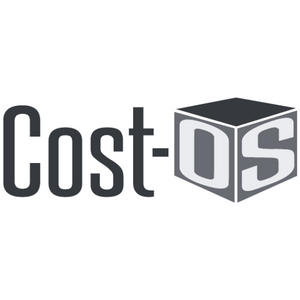Tackling Supply Chain Issues in the Preconstruction Phase

In the construction world, preconstruction planning is an important phase that sets the foundation for the entire project. However, supply chain issues in this phase have become a major concern in recent years. From material shortages to pricing volatility, these issues can lead to delays, increased costs, and project inefficiency. As construction projects grow in complexity, addressing supply chain problems during preconstruction is vital to ensuring successful project outcomes.
Let’s explore how construction professionals can mitigate supply chain risks by tackling challenges such as material shortages, managing pricing volatility, and ensuring project success through proactive planning and smart use of technology. Additionally, we’ll explore how tools like DESTINI Estimator can help navigate these issues in the preconstruction phase.
Rising Consumer Demands and Their Impact on the Construction Industry
Construction is no stranger to fluctuations in consumer demand. Over the past several years, demand has varied across different market sectors. For instance, residential construction surged during the pandemic as more people sought larger homes due to remote work policies. Conversely, demand for commercial construction declined as more people worked from home. The construction industry has had to adapt rapidly to these changes to meet heightened customer expectations.
In many cases, increased demand has strained the raw materials market. Lumber, steel, and other essential materials have experienced price hikes, making it more challenging for construction firms to manage project budgets and timelines. The supply chain crisis has further complicated forecasting when these materials will be available or how much they will cost, introducing additional uncertainty.
Pricing volatility means many firms struggle to balance demand, availability, and customer expectations for low costs. To manage these fluctuations, many firms have turned to digital tools. For instance, cost estimators help construction teams navigate uncertainties by offering dynamic cost projections, allowing them to account for material price shifts before they become serious issues.
The Growing Impact of Supply Chain Issues in Construction
The global construction industry has always been susceptible to supply chain disruptions, and in addition to customer demand, these additional disruptions have reached unprecedented levels. The COVID-19 pandemic, labor shortages, and rising costs of raw materials have all contributed to this crisis. According to a McKinsey & Company survey, supply chain disruption has impacted the ability of construction companies to meet deadlines, control costs, and adhere to customer demands. With the increasing complexity of construction projects, addressing supply chain challenges is no longer optional but essential.
Supply chain visibility and effective supply chain operations are important for ensuring that construction teams can access the right materials at the right time—and at the right price. When teams lack clear visibility into their supply chain, issues like delayed deliveries, unexpected price hikes, and material unavailability can lead to costly delays, affecting the entire project timeline.
Companies relying on traditional inventory management and procurement models are disadvantaged in today’s rapidly changing landscape. Supply chain risks—including natural disasters, pandemics, shifting trade agreements, fluctuating tariff regulations, and transportation disruptions—are no longer outliers but are inherent to the modern supply chain structure. This is especially true in construction, where material delays and labor shortages can halt progress, leading to costly setbacks.
To mitigate these risks, construction firms must focus on building resilient supply chain operations. Supply chain visibility plays a crucial role in predicting and addressing potential disruptions. With the increased integration of real-time data, companies can react more effectively to unforeseen delays. As a result, industry stakeholders are becoming more proactive, emphasizing long-term strategies to withstand future supply chain crises.
Mitigating Material Shortages
One of the most pressing issues in the preconstruction phase is material shortages. Raw materials like steel, wood, and concrete are essential to nearly every construction project, and shortages can stall progress, increase project timelines, and raise costs. Consumer demands in various sectors, from residential housing to commercial construction, have significantly increased the pressure on global supply chains.
Accurate demand forecasting plays an important role in mitigating material shortages. Supply chain managers must work closely with suppliers to predict material needs and ensure that resources are secured well in advance. Advanced analytics and artificial intelligence tools can optimize these forecasts, helping to predict fluctuations in demand and ensuring that materials are available when needed.
For example, tools like DESTINI Estimator, which helps with accurate cost estimation and material tracking, allow project teams to calculate the required quantities of materials based on project specifications. This minimizes over-ordering and ensures supply chain managers can plan and secure materials well ahead of time.
Managing Pricing Volatility
Pricing volatility is another issue that construction firms face in the preconstruction phase. Materials prices can fluctuate widely based on global demand, geopolitical factors, and disruptions in supply chains. For instance, steel prices surged dramatically during the COVID-19 pandemic due to increased demand and the resulting supply chain bottlenecks. Such volatility can make it difficult to predict costs accurately, and this unpredictability has been compounded by labor shortages in many parts of the world. Today, the unknown variable is how or when tariff fees could impact pricing.
Managing pricing volatility requires cost estimation practices that consider market fluctuations. Real-time data and historical pricing trends can help predict future price movements, allowing project managers to make more informed decisions. Cost estimating tools help teams stay ahead by offering real-time cost data and predictive analytics. By using these tools, construction firms can include buffers for price increases and avoid major disruptions to the budget as market prices fluctuate.
By digitizing supply chains, construction firms can gain more transparency into pricing trends. Through integration with suppliers and distributors, firms can receive up-to-date information on prices and availability, allowing them to make informed purchasing decisions during the preconstruction phase.
Overcoming Labor Shortages
Labor shortages have been another supply chain challenge impacting construction projects in recent years. The AGC of America/Sage 2025 Construction Hiring & Business Outlook says that 80% of construction firms can’t find enough labor to hire. The construction industry has faced a severe shortage of skilled labor, particularly in the U.S. As a result, the limited availability of qualified workers has slowed construction timelines and increased costs. The COVID-19 pandemic exacerbated this problem and disrupted the labor market, which led to widespread worker shortages in various industries. Now, the construction industry is threatened by immigration enforcement activities.
To overcome these labor shortages, firms must increase the efficiency of existing labor through better planning and forecasting. Predictive analytics and workforce management tools can help project managers optimize labor deployment, ensuring the right number of skilled workers are available when needed. Implementing automation in certain tasks, such as material handling and logistics, can alleviate some of the labor shortages that have impacted project schedules.
Additionally, adding estimating tools can help optimize project workflows by automating tasks such as cost estimation and scheduling. This reduces the reliance on manual processes and allows the project team to focus on other aspects of the project, including labor and material procurement.
Building Resilient Supply Chains
Building resilient supply chains will be essential for mitigating risks as the industry continues to face supply chain disruption. This involves creating strategies to improve flexibility and adaptability to external forces, such as natural disasters, pandemics, or geopolitical tensions. Key elements of resilient supply chains include diversification of suppliers, investment in local sourcing, and the use of technology to create more responsive, adaptable processes.
Construction companies must adapt as supply chain disruptions become more frequent and severe. By diversifying their supply chains and strengthening relationships with suppliers, firms can better protect themselves from the ongoing challenges plaguing the industry in recent years. Many construction firms are already adopting more agile approaches to sourcing materials. Rather than relying on just one or two suppliers for critical materials, companies are expanding their supplier base, enabling them to adjust when a supplier experiences delays or other issues.
Supply chain visibility is crucial for building resilience. With real-time insights from technology, construction teams can quickly identify potential disruptions and address them proactively. By leveraging advanced supply chain operations technology, companies can collaborate more effectively with suppliers, ensuring materials are delivered on time and in the required quantities—despite external challenges.
Future-Proofing the Construction Supply Chain
The future of construction will likely see more digital transformation with digitized supply chains. As technology evolves, supply chain managers will have access to more advanced tools for managing everything from material procurement to logistics and workforce deployment. The use of blockchain for supply chain traceability and artificial intelligence for demand forecasting will become more common.
Construction firms can tackle supply chain issues and improve their overall project performance by creating smarter, more efficient supply chains. The future will demand that companies innovate and adopt the latest technological advancements to stay ahead of customer expectations and consumer demands.
Construction Firms Must Get Ahead of Supply Chain Issues
The construction supply chain crisis is real, and it has become evident that the preconstruction phase must pay more attention to its supply chain problems. By mitigating material shortages, managing pricing volatility, and overcoming labor shortages, construction firms can significantly reduce risks and improve their project outcomes.
Tools like DESTINI Estimator have proven invaluable in helping companies navigate these challenges. By offering real-time data and predictive analytics, the software allows construction firms to make more accurate estimates, better plan for cost increases, and avoid disruptions in the supply chain.
Ultimately, the key to addressing supply chain issues in preconstruction is proactive planning, embracing technology, and building resilient supply chains that can withstand the pressures of today’s ever-changing construction environment.

-1.png?width=112&height=112&name=image%20(4)-1.png)














